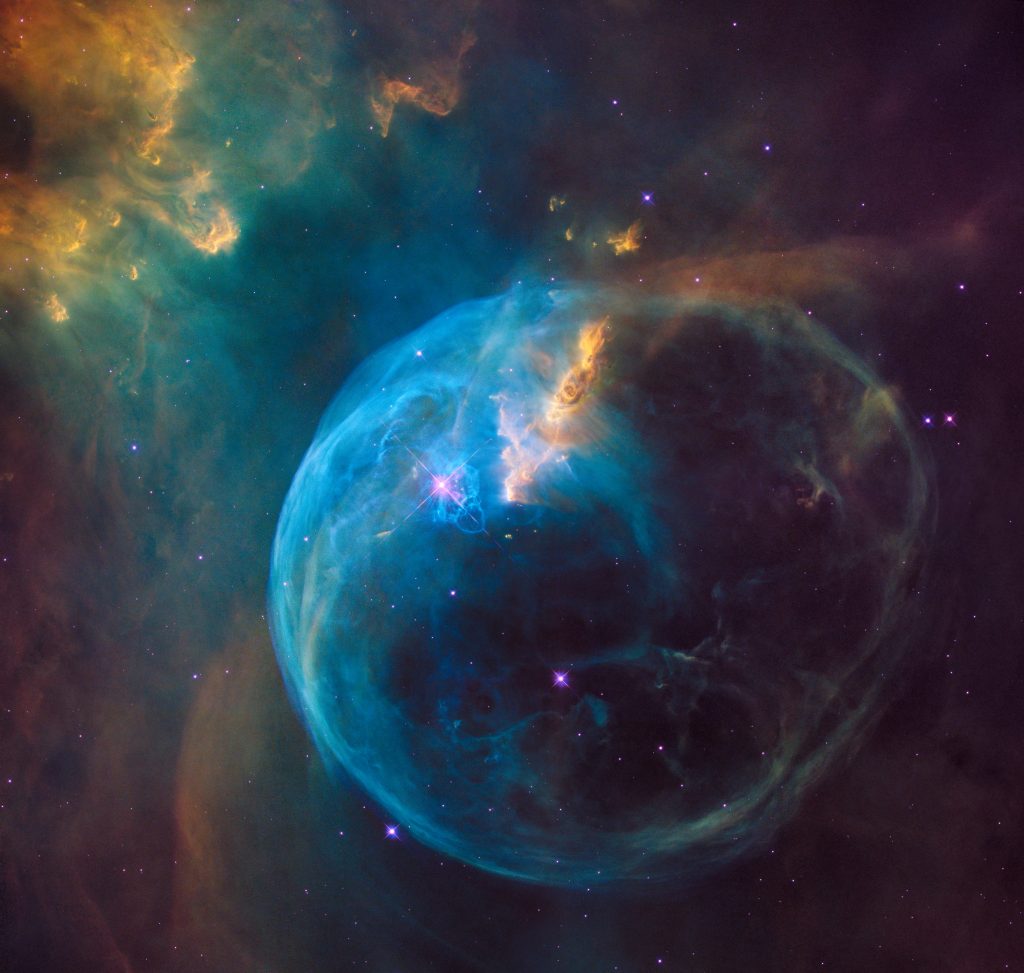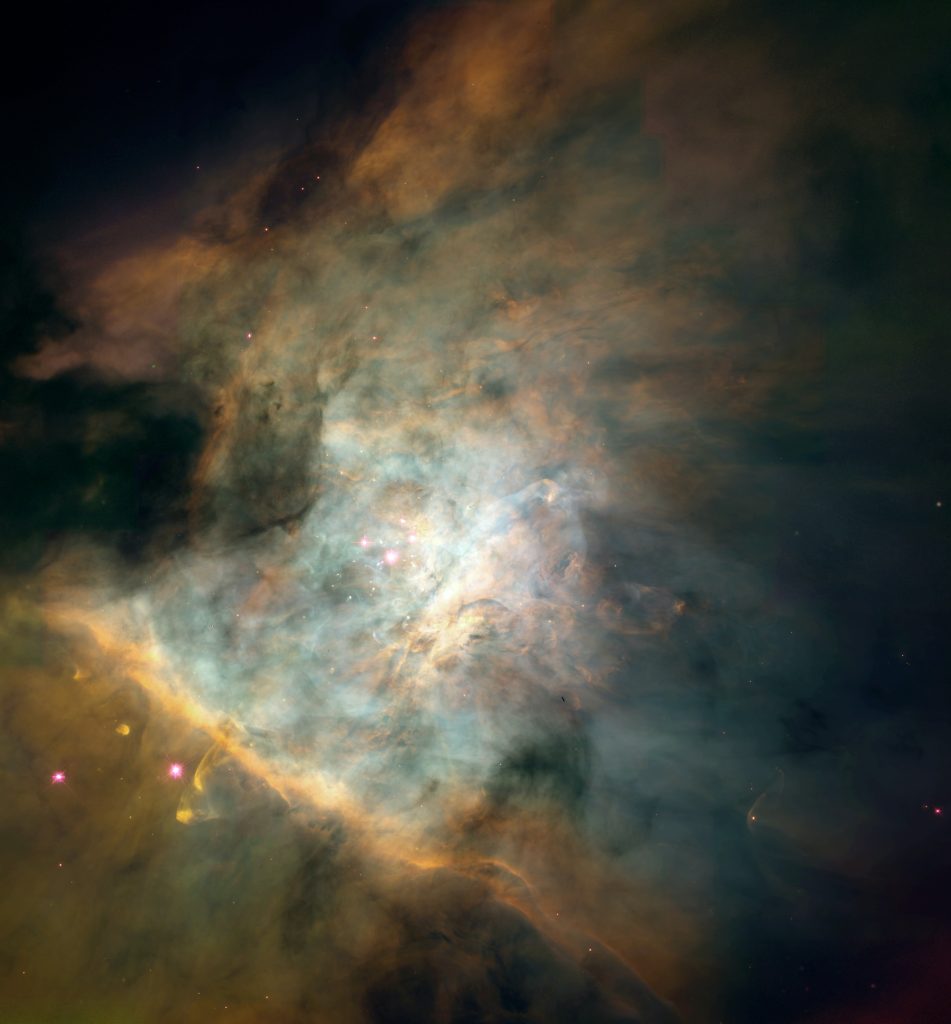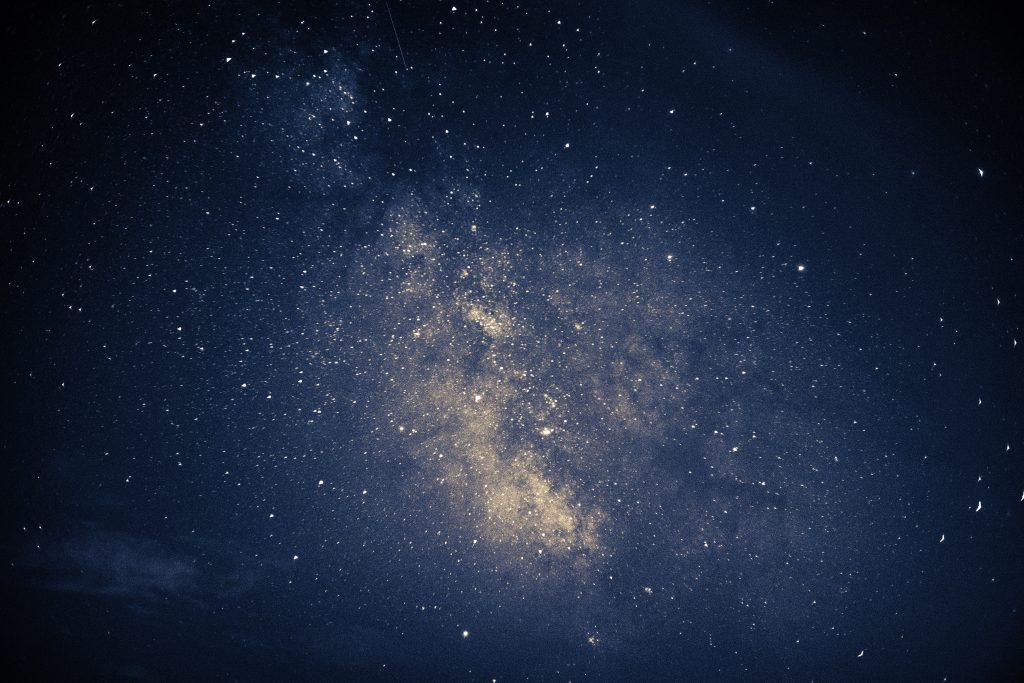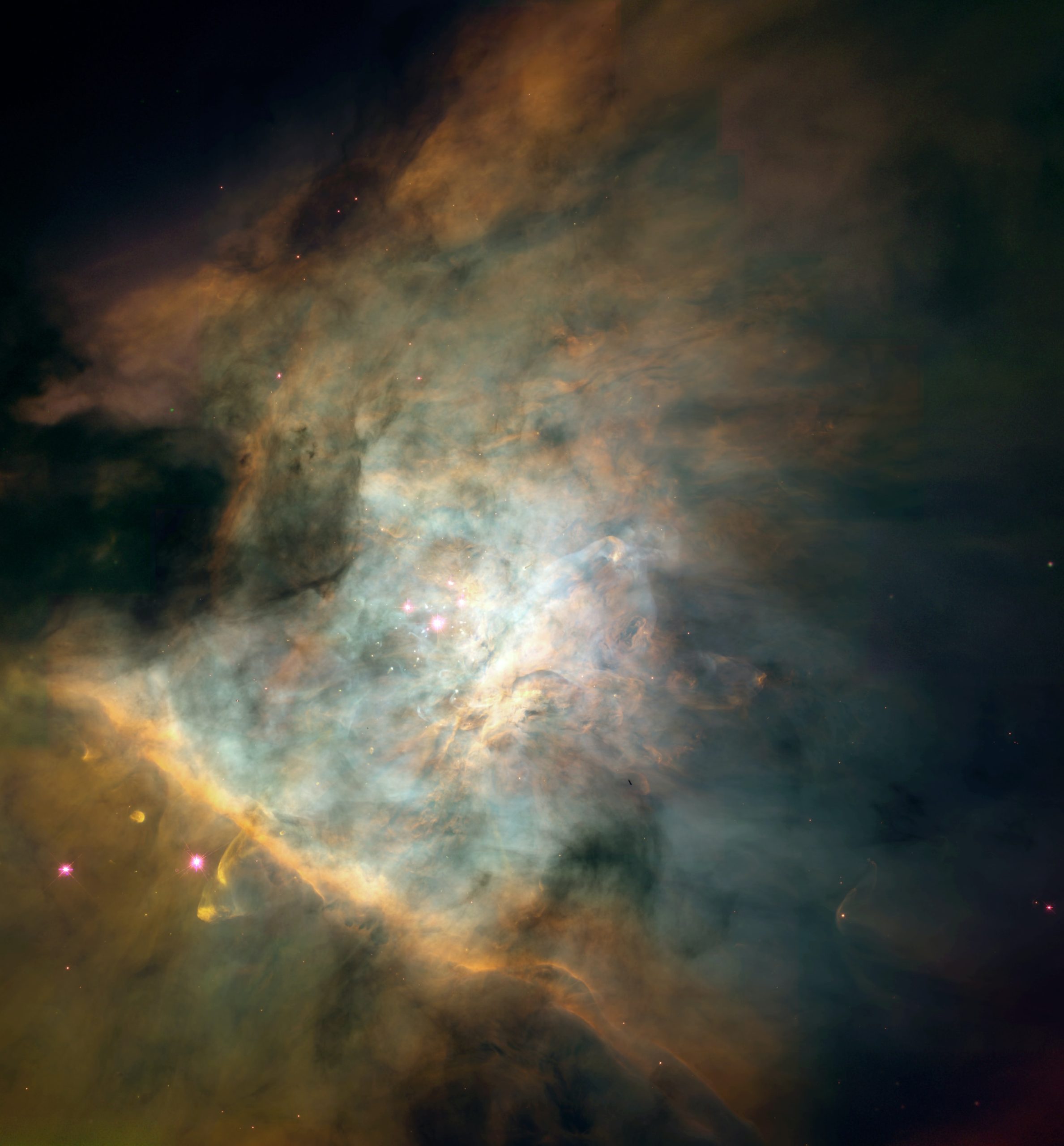Are you eager to catch a glimpse of the majestic Horsehead Nebula through a telescope? Exciting! To observe this captivating celestial wonder, you’ll need to follow a few simple steps. Firstly, ensure that you have a telescope equipped with at least a four- to six-inch aperture. This will allow enough light-gathering power to reveal some of the nebula’s intricate details.
Next, choose a date with clear and dark sky conditions as this will enhance your viewing experience. Head out to a location away from city lights and pollution where the night sky is at its darkest. Once you’ve arrived, set up your telescope on a sturdy and level surface. Adjust the magnification and focus of your telescope to maximize the clarity of your view. With patience and a little luck, you’ll soon find yourself in awe of the distinctive shape of the Horsehead Nebula against the starry backdrop, a sight to behold. Good luck and happy stargazing!

Choosing the Right Telescope
Consider the aperture
When choosing a telescope to observe the Horsehead Nebula, the aperture is an important factor to consider. The aperture refers to the diameter of the telescope’s primary lens or mirror. A larger aperture allows more light to enter the telescope, which results in a brighter and more detailed view of celestial objects. For observing faint objects like the Horsehead Nebula, a telescope with a larger aperture is recommended to maximize visibility.
Focus on the focal length
The focal length of a telescope plays a crucial role in determining its magnification power. Longer focal lengths provide higher magnification, allowing you to observe celestial objects in more detail. However, it’s important to strike a balance between magnification and field of view. The Horsehead Nebula is located within the Orion Molecular Cloud Complex, a vast region of space, so a telescope with a medium focal length can help you capture both the Horsehead Nebula and its surrounding context.
Select an appropriate mount
Choosing the right mount for your telescope is essential for stable and smooth observation. A sturdy mount will minimize vibrations, which can disrupt your view and make it difficult to focus on the Horsehead Nebula. Equatorial mounts are often preferred for deep-sky observations like the Horsehead Nebula since they allow for precise tracking and compensation for the Earth’s rotation.
Take into account the telescope type
There are various types of telescopes available, such as refractors, reflectors, and compound telescopes. Each type has its advantages and disadvantages. Refractors offer excellent image quality but can be more expensive for larger apertures. Reflectors, on the other hand, provide good value for money and are well-suited for capturing faint objects like the Horsehead Nebula. Compound telescopes combine the benefits of refractors and reflectors, making them versatile options for both visual observation and astrophotography.
Understanding the Horsehead Nebula
Explore its location in the sky
The Horsehead Nebula is a dark nebula that appears as a distinct shape resembling the head of a horse against a glowing background of gas and dust. It is located in the constellation Orion, near the star Alnitak. Studying star charts, constellation maps, or astronomical software can help you identify the precise location of the Horsehead Nebula in the night sky.
Learn about its characteristics
The Horsehead Nebula is part of the larger Orion Molecular Cloud Complex and is primarily composed of dense, dark dust clouds. It is an active star-forming region with young, hot stars illuminating the surrounding gas and dust. Understanding the characteristics of the Horsehead Nebula can enhance your appreciation and observation of this stunning celestial object.
Understand its visibility and conditions
Observing the Horsehead Nebula can be challenging due to its low surface brightness and obscured view by surrounding dust. The best conditions for viewing the Horsehead Nebula are under dark skies with minimal light pollution. Patience and perseverance are key, as it may take time for your eyes to adapt to the darkness and pick out the subtle details of this intriguing nebula.
Preparing for Observation
Check the weather conditions
Before planning a night of observation, it’s important to check the weather conditions. Clear skies are essential for optimal visibility of the Horsehead Nebula and other celestial objects. Cloud cover, humidity, and atmospheric turbulence can all affect your viewing experience. Ensure that the weather forecast indicates clear skies and favorable conditions for your observation.
Determine the best viewing time
The best time to observe the Horsehead Nebula is during the winter months in the Northern Hemisphere when the constellation Orion is most prominent in the night sky. It is generally recommended to observe during moonless nights to minimize the interference from moonlight. Additionally, waiting for the Horsehead Nebula to reach its highest point in the sky, known as its culmination, can provide the best viewing angle.
Find a suitable observation site
To have a successful observation of the Horsehead Nebula, you need to find a suitable observation site. Look for a location away from city lights and light pollution, such as a dark sky reserve or a remote area far from urban centers. Set up your telescope on a stable surface to avoid vibrations, and consider using a red flashlight or light shield to preserve your night vision during observation.
Assembling and Aligning Your Telescope
Set up the tripod and mount
Begin assembling your telescope by setting up the tripod and attaching the mount. Ensure that the mount is securely fastened to the tripod and balanced properly. A stable and level base is crucial for smooth and accurate tracking of the Horsehead Nebula.
Attach the telescope tube
Carefully attach the telescope tube to the mount, taking care not to exert excessive force or misalign any components. Double-check that all connections are secure before moving on to the next step.
Align the finderscope with the main telescope
The finderscope is a smaller auxiliary telescope mounted on top of the main telescope. Aligning it with the main telescope is crucial for accurate aiming. Follow the manufacturer’s instructions to ensure proper alignment, adjusting the finderscope as necessary until the crosshairs or reticle are centered on a distant object.
Calibrate the mount’s tracking
To accurately track the Horsehead Nebula as it moves across the sky due to Earth’s rotation, you need to calibrate the mount’s tracking. This typically involves aligning the mount with the celestial pole or a known star. Utilize the mount’s built-in alignment procedures or refer to the manufacturer’s instructions for precise calibration.

Using the Right Eyepiece
Consider the magnification
Magnification plays a vital role in observing the Horsehead Nebula. Too high of a magnification may make the nebula appear smaller and dimmer, while too low of a magnification may not reveal its intricate details. Experiment with different eyepieces and magnification levels to find the right balance for observing the Horsehead Nebula.
Choose the appropriate eyepiece
Selecting the correct eyepiece is crucial in capturing the Horsehead Nebula with clarity and detail. Eyepieces with a wider field of view can help you encompass more of the surrounding nebula and enhance the overall viewing experience. Consider using eyepieces specifically designed for deep-sky observation to enhance contrast and clarity.
Experiment with different filters
Filters can significantly enhance your view of the Horsehead Nebula by selectively blocking certain wavelengths of light, reducing light pollution, and enhancing contrast. A narrowband filter, such as a hydrogen-alpha filter, can help isolate the nebula’s emissions for a clearer view. Experiment with filters to find the ones that work best for observing the Horsehead Nebula under your specific conditions.
Adjust the focus
Achieving a crisp and clear focus is essential for observing the Horsehead Nebula. Take your time to adjust the focus knob on your telescope, ensuring that the nebula appears as sharp as possible. You can also utilize auto-focusing tools or software to fine-tune the focus for optimal image quality.
Locating the Horsehead Nebula
Identify key reference stars
To locate the Horsehead Nebula, it is helpful to identify key reference stars in the constellation Orion. Familiarize yourself with prominent stars, such as Betelgeuse, Rigel, and Bellatrix, as they can serve as reliable reference points for navigating to the nebula.
Use star charts or planetarium software
Star charts or planetarium software can be invaluable tools for locating the Horsehead Nebula. These resources provide detailed maps of the night sky, allowing you to pinpoint the nebula’s position relative to other celestial objects. Utilize these references to plan your observation session and aid in your quest to find the Horsehead Nebula.
Follow star-hopping techniques
Star-hopping is a technique that involves moving from one reference star to another until reaching the desired target, in this case, the Horsehead Nebula. By systematically hopping from star to star, you can navigate with confidence and enhance your chances of finding the elusive nebula.
Utilize digital setting circles or GoTo technology
Digital setting circles (DSC) or GoTo technology can greatly simplify the process of locating the Horsehead Nebula. These systems utilize electronic databases and motorized mounts to automatically direct your telescope to specific celestial objects. Inputting the coordinates of the Horsehead Nebula into the DSC or engaging the GoTo function can save time and frustration during your observation.

Taking Long Exposures
Understand the concept of long exposure
Long exposure photography involves leaving the camera’s shutter open for an extended period, allowing more light to reach the sensor. This technique is ideal for capturing faint objects like the Horsehead Nebula, as it enhances the visibility and detail of the nebula.
Use tracking or autoguiding techniques
To ensure sharp and precise long exposure images of the Horsehead Nebula, it is essential to use tracking or autoguiding techniques. These methods compensate for the Earth’s rotation, allowing your camera to remain aligned with the nebula throughout the exposure. Utilize a equatorial mount with tracking capabilities or employ autoguiding systems for optimal results.
Choose the appropriate exposure time
Determining the right exposure time is crucial when photographing the Horsehead Nebula. Too short of an exposure may leave the nebula underexposed, while too long of an exposure can result in overexposure and loss of detail. Experiment with different exposure times to find the optimal balance for capturing the desired level of detail and contrast.
Manage light pollution
Light pollution can significantly impact the quality of your long exposure images of the Horsehead Nebula. Look for dark sky locations away from urban areas to minimize light pollution. Additionally, consider using light pollution or nebula filters that selectively block certain wavelengths of light to enhance the visibility of the nebula and reduce the impact of light pollution.
Photographing the Horsehead Nebula
Attach a camera to the telescope
To photograph the Horsehead Nebula, attach a camera capable of long exposure photography to your telescope. Ensure the camera is securely connected and properly aligned with the telescope’s focal plane. Use a T-ring adapter or dedicated camera mount for a secure and stable connection.
Focus and frame the subject
Carefully focus your camera on the Horsehead Nebula, ensuring that it appears sharp and in clear focus. Experiment with different focus settings to capture the nebula’s intricate details. Frame the subject appropriately, considering the surrounding context and composition to create visually appealing and captivating images.
Capture multiple exposures and stack them
To enhance the signal-to-noise ratio and capture finer details of the Horsehead Nebula, consider capturing multiple exposures of varying lengths and combine them through a process called stacking. Stacking software aligns and integrates the images to reveal more information and improve the overall quality of the final image.
Process the images for desired results
Post-processing plays a critical role in astrophotography to bring out the best in your captured images. Use software such as Adobe Photoshop or dedicated astrophotography software to adjust brightness, contrast, color balance, and reduce image noise. Experiment with various processing techniques to achieve your desired artistic vision for the Horsehead Nebula.
Maintenance and Care
Clean the optics regularly
To maintain optimal performance, it is important to clean your telescope’s optics regularly. Dust, dirt, and fingerprints can accumulate on the lenses or mirrors, reducing image quality. Follow the manufacturer’s instructions and use appropriate cleaning tools and techniques to safely clean the optics and keep them in pristine condition.
Store the telescope in a safe place
When not in use, store your telescope in a safe place to protect it from physical damage. Use telescope cases or protective covers to shield it from dust, moisture, and other harmful elements. Avoid storing it in extreme temperatures or humid environments, as these conditions can degrade the telescope’s components over time.
Protect it from extreme temperatures
Extreme temperatures can have detrimental effects on your telescope’s performance and longevity. Avoid exposing the telescope to sudden temperature changes or storing it in overly hot or cold environments. Gradually acclimate the telescope to ambient temperatures before use to prevent thermal stress and potential damage to delicate internal components.
Check and maintain the mount’s accuracy
Regularly check the accuracy of your mount’s tracking and alignment. Over time, the mount’s performance may be affected by wear, tear, or calibration drift. Recalibrate the mount as necessary, refer to the manufacturer’s guidelines, and perform routine maintenance to ensure its accuracy and reliability.
Expanding Your Observations
Explore other deep-sky objects
Observing the Horsehead Nebula can ignite a passion for exploring other deep-sky objects. Expand your observations by discovering other nebulae, galaxies, and star clusters. Each offers a unique insight into the vastness and beauty of the universe, providing endless opportunities for exploration and awe-inspiring discoveries.
Learn about astrophotography techniques
Astrophotography is a fascinating and rewarding pursuit that allows you to capture the wonders of the night sky in vivid detail. Dive deeper into astrophotography techniques to enhance your skills and capture breathtaking images of celestial objects beyond the Horsehead Nebula. Experiment with different equipment, techniques, and processing methods to unlock the full potential of astrophotography.
Join an astronomy club or community
Joining an astronomy club or community is an excellent way to expand your knowledge, receive guidance, and connect with like-minded individuals passionate about the cosmos. These groups often organize star parties, workshops, and discussions that can deepen your understanding of astronomy and provide opportunities for shared experiences and collaboration.
Consider upgrading your equipment
As you delve further into the world of astronomy and astrophotography, you may find that upgrading your equipment becomes desirable. Advances in technology and improving your understanding may necessitate investing in more advanced telescopes, cameras, or accessories to push the boundaries of what you can observe and capture. Assess your goals, research new equipment, and make informed decisions to enhance your astronomical pursuits.











